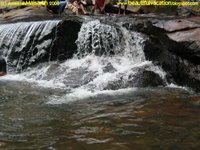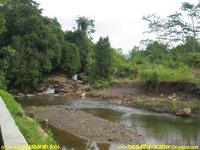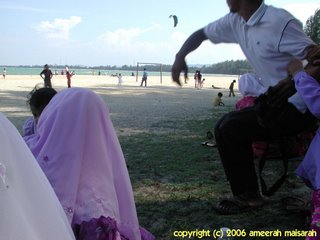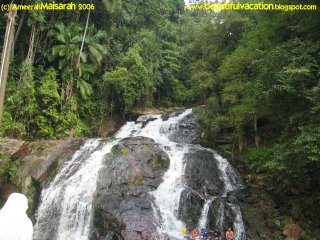
The Kota Tinggi park was made famous by the river and the waterfall. It is the focal point of the days outing. This is one waterfall that is southernmost and near to urban Singapore. The Kota Tinggi Waterfall is located 62km away from Johor Bahru, and 16km away from Kota Tinggi. One of Johor's noted natural attraction, it is a great favourite among the locals.Originating from the top of Gunung Panti, the waterfall cascades down a rock face some 34 metres into a small pool below.
The area of the park itself is relatively small by our standard. It has a gigantic car park, almost half the area of the park. From the car park to the main waterfall area is a beeline line along the bank of the river. This distance is approximately just below a kilometer.
I think the best part of the trip, is to witness an authentic waterfall. made by nature. Of course, the river that flows down from the low hills of Muntahak 634m high cannot be big. Likewise the volume of water through the waterfall was not dramatic at the time this picture was taken.
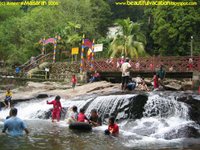
This is a good place to bring your children out for the weekends. More appropriate for most urban family who could not find time for more exotic destination. As for plans of having picnic, just have something very simple. But the problem is you could not find suitable place to enjoy that day off and justifying the long journey here. Of course within that small space and the large crowd, cannot expect a very conducive ambience. But I think, after swimming at the base of the waterfall you can forget all of that problem .
